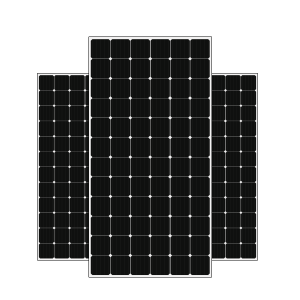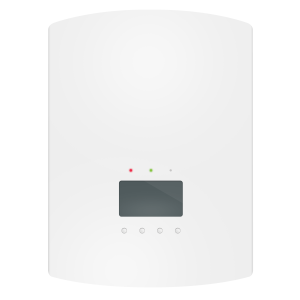When the sun is shining, solar panels convert sunlight into DC (direct current) electricity. The solar inverter converts this electricity into AC (alternating current) power for use in your home. Your home appliances (fridge, dishwasher, pool pumps etc.) use this power instead of drawing power from the electricity grid.

Any excess electricity generated by solar panels but not used by appliances is sent back (exported) to the electricity grid or used to charge a solar battery. Electricity Retailers pay a feed-in tariff for any electricity sent back to the grid.>
Solar generation, consumption and export is tracked and recorded through a smart meter, providing the data for electricity billing.
Solar systems are most effective when they are well positioned (north-facing is optimal, but not essential) and exposed to enough sunlight without obstruction by shade caused from trees, power lines or other structures.
Reduce or even eliminate your future power bills. Based on the size of your solar system, your energy usage and where you live, an iinergy solar panel system can help you drastically reduce your ongoing electricity bill.
A recent survey conducted by Origin Energy found that 77% of Australians think that solar panels add value to a property. Estimates suggest that a 5kw installation can increase your home value by approximately $29,000.
Production and installation costs have reduced dramatically in the past 10 years. Maximise the Government rebates that you are entitled to such as STC’s and feed-in tariffs. The best part is that iinergy offer flexible payment plans with no upfront costs!
Solar power systems require minimal maintenance, with most electronic components being ideally maintenance free. In case you need maintenance let our friendly master technicians help you.
Space: Roof size affects the amount of panels that can be installed on the roof. With limited roof space, to reach certain sizes, higher efficiency (and more expensive) panels may need to be installed.
Strength: The roof must be able to hold the load of the panels. At ~20kg a panel, it cannot be placed on pergolas or patios.
Orientation: In the southern hemisphere, roof aspects facing north get the most sunlight and efficiency. Roof aspects facing east, get sunlight earlier in the day (later if west facing) with a little performance drop. Roof aspects facing south see a 20%-30% drop in performance.
Ownership: Long leases or complete ownership of the building makes a solar system investment most attractive. However, Power Purchasing Agreements are available to mitigate the owner cost/leasee benefit problem.
Shade Free Roof: Without optimisers, any shadows from trees will destroy the generation of an entire string of panels. Therefore, the solar panels will only be placed on parts of the roof where there is no shading at anytime of the day.
Tight Rivets: The tightness of the existing rivets determine how closely the rows of solar panels can be fit together – this is because we do not drill any new holes into the roof during installation. We use the existing rivets.
Asbestos Free: As a matter of health and safety, our electricians will not install on roofs with asbestos roof tiles.
Number of panels x wattage of each panel.
Australia is divided into 4 solar zones
If the STC discount was provided by the installer at point-of-sale, the installer will be entitled to receive the STC payment from Green Energy Trading. STCs can be claimed from the date the system has been completely and correctly installed and must be claimed within 12 months of the installation date.
Please visit the Renewable Energy Target website for more detail on STC eligibility scenarios.

Solar panel arrays are the most expensive part of the system. Often making up around 55% of the total system price. They are also the most robust component with many reputable manufacturers offering 10yr replacement warranties and the panels lasting long after that.
The inverter is the second most expensive part of the system. It often makes up 30% of the system price. It normally has a warrantable life of 10yrs. It must be placed away from direct sunlight to maximise its life.

Solar panels are mounted onto rails and these rails are fixed onto the roof with brackets. These brackets are screwed into the roof using the roof’s existing rivets, so that no new holes are created on the roofs. The mounting kits change depending on whether the roof is tin or tile. Other mounting options are available on request.
The solar panels are connected into a series. DC cables are then run from the panels to the inverters. AC cables are then run from the switchboard to the meter. The longer the run to the meter, the more expensive this becomes. Cable trays can be included with your install upon request.
